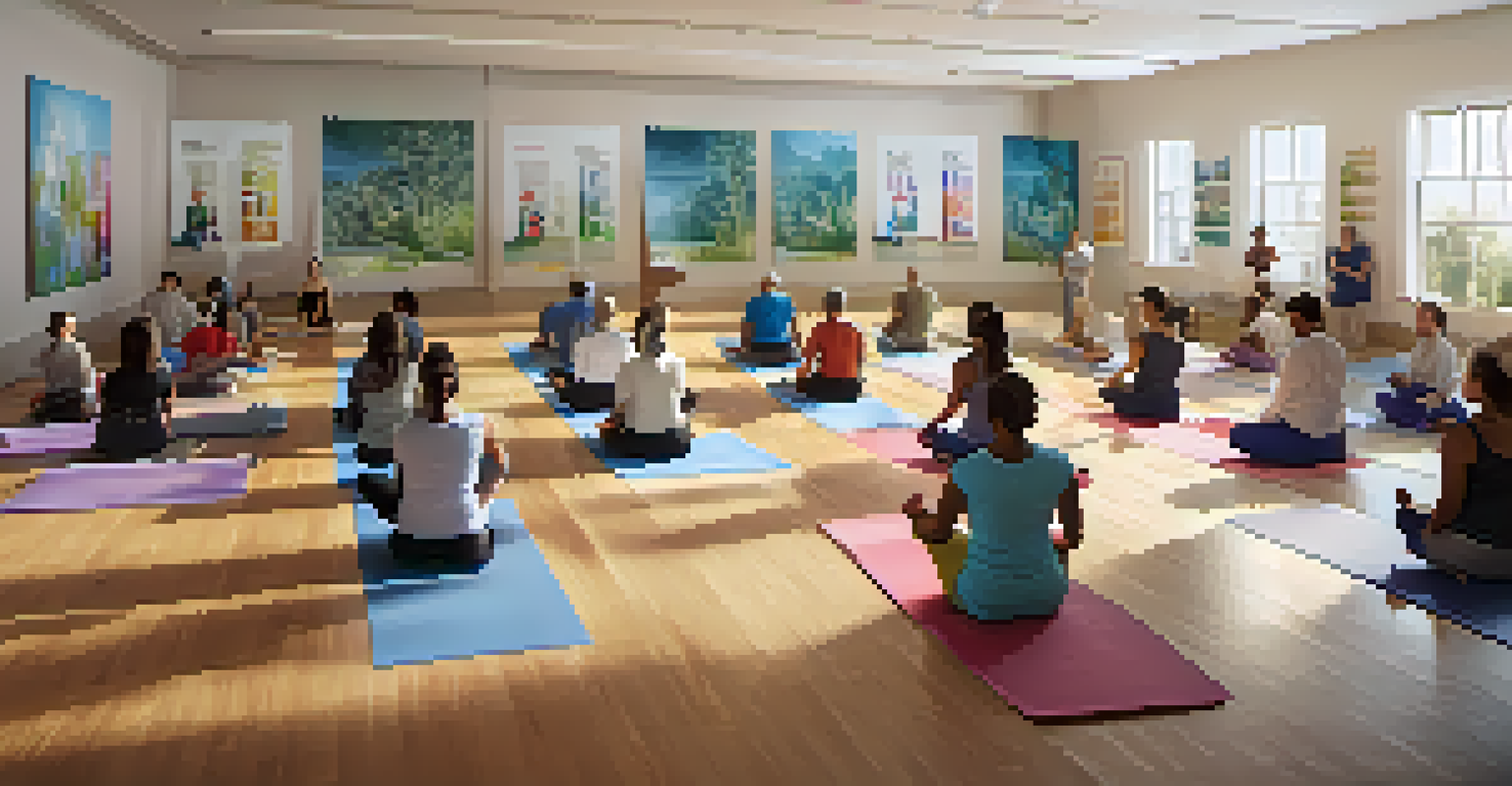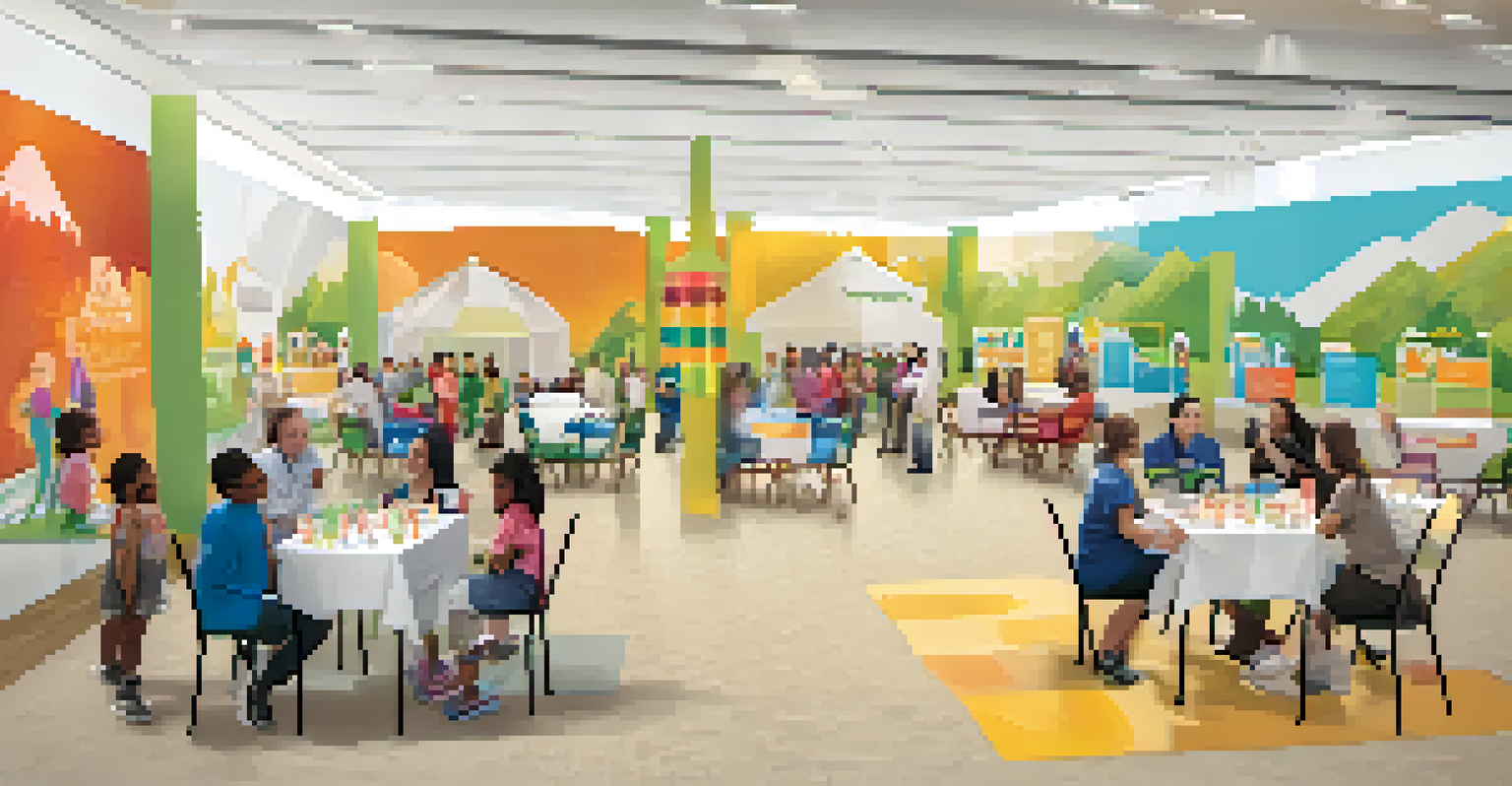Health and Wellness Fairs: Engaging the Community Effectively

Understanding the Importance of Health and Wellness Fairs
Health and wellness fairs serve as a vital bridge between community members and health resources. They create opportunities for individuals to learn about their well-being in a supportive environment. These events can demystify health topics and empower attendees to take charge of their health journeys.
The greatest wealth is health.
By gathering various health service providers, wellness experts, and local organizations under one roof, fairs encourage community engagement. They foster connections that might not happen in a clinical setting, making health discussions more approachable. Plus, they can address specific local health concerns, tailoring information to the community's needs.
Ultimately, these fairs highlight the importance of preventive care and healthy living, encouraging attendees to prioritize their well-being. Whether it's through free screenings, informative workshops, or engaging activities, health fairs can transform how communities perceive and engage with health.
Crafting an Engaging Program for Attendees
An engaging program is essential for attracting a diverse audience. Consider including a mix of informative talks, interactive workshops, and fun activities that cater to all ages and interests. For instance, yoga demonstrations or cooking classes can make health topics more relatable and enjoyable.

Incorporating local experts and community leaders as speakers can add credibility and familiarity to the event. Their insights can resonate with attendees, making the information feel more relevant. Plus, this approach can help create a sense of community ownership over health issues.
Health Fairs Enhance Community Wellness
Health and wellness fairs connect community members with resources and promote preventive care in an approachable environment.
Don't forget to include hands-on experiences, like health screenings or fitness challenges, to keep attendees active and engaged. When people can see and feel the benefits of health initiatives firsthand, they’re more likely to embrace them and share their experiences with others.
Promoting the Event to Maximize Attendance
Effective promotion is key to maximizing attendance at health and wellness fairs. Utilize various channels, such as social media, local newspapers, and community bulletin boards, to reach a wide audience. Creating eye-catching graphics and engaging content can draw attention and spark interest.
An ounce of prevention is worth a pound of cure.
Engaging with local influencers or community leaders can also amplify your reach. They can share the event details with their followers, lending additional credibility. Offering incentives, like raffle prizes or freebies, can serve as an extra motivation for people to show up.
Finally, consider leveraging partnerships with local businesses and organizations. They can help promote the event through their networks, and in return, they might benefit from exposure during the fair. A collaborative approach often leads to greater enthusiasm and turnout.
Creating a Welcoming Atmosphere for All Ages
A welcoming atmosphere is crucial for ensuring everyone feels comfortable attending. Consider the layout and design of the event space; make sure it’s accessible and inviting. Clear signage can guide attendees through the fair, helping them feel oriented and engaged right from the start.
Offering designated areas for different age groups can enhance the experience. A kids' zone with fun activities can keep younger attendees engaged while allowing parents to explore health resources without worry. Additionally, providing quiet spaces for those who may feel overwhelmed ensures that everyone can enjoy the fair.
Engaging Programs Attract Diverse Crowds
An engaging program that includes interactive activities and local experts fosters greater participation and a sense of community ownership.
Encouraging a friendly, approachable demeanor among volunteers and staff can further enhance the experience. When attendees feel greeted warmly and are supported in their inquiries, they are more likely to engage fully with the resources offered.
Incorporating Technology for Enhanced Engagement
In today's digital world, incorporating technology into health fairs can boost engagement. Consider using event apps or QR codes to provide attendees with instant access to information, schedules, and resources. This tech-savvy approach can make it easier for participants to navigate the event and connect with what interests them.
Live streaming certain sessions or offering virtual participation can also widen your audience reach, allowing those unable to attend in person to engage. This hybrid model means that more people can benefit from the expert insights shared at the fair.
Additionally, utilizing social media during the event can create a sense of community online. Encourage attendees to share their experiences with event-specific hashtags, fostering discussions that extend beyond the fair itself.
Evaluating Success: Gathering Feedback Post-Event
Evaluating the success of your health and wellness fair is essential to improving future events. Gathering feedback from attendees through surveys or informal discussions can provide valuable insights. Ask questions about what they enjoyed, what they learned, and areas for improvement.
Analyzing attendance numbers and engagement levels at different activities can help identify which aspects resonated most with the audience. This data can guide you in planning future events that better meet community needs and preferences.
Ongoing Engagement Strengthens Impact
Building lasting relationships through follow-ups and community initiatives ensures that health discussions and support continue beyond the event.
Don't forget to reach out to vendors and partners for their input as well. Their perspective on the event’s organization and attendee interactions can help refine your approach and strengthen future collaborations.
Building Lasting Relationships Beyond the Fair
Health and wellness fairs shouldn’t just be one-off events; they can serve as a springboard for ongoing community relationships. Following up with attendees through newsletters or social media can keep health discussions alive and encourage continued engagement. Share resources, tips, and upcoming events to maintain interest.
Creating a community health committee or support group can also foster connections among participants. This initiative can provide a platform for sharing experiences and resources, creating a supportive network that extends beyond the fair.

Ultimately, the goal is to cultivate a community culture centered around health and well-being. By encouraging ongoing conversations and providing resources, you empower individuals to lead healthier lives long after the fair concludes.